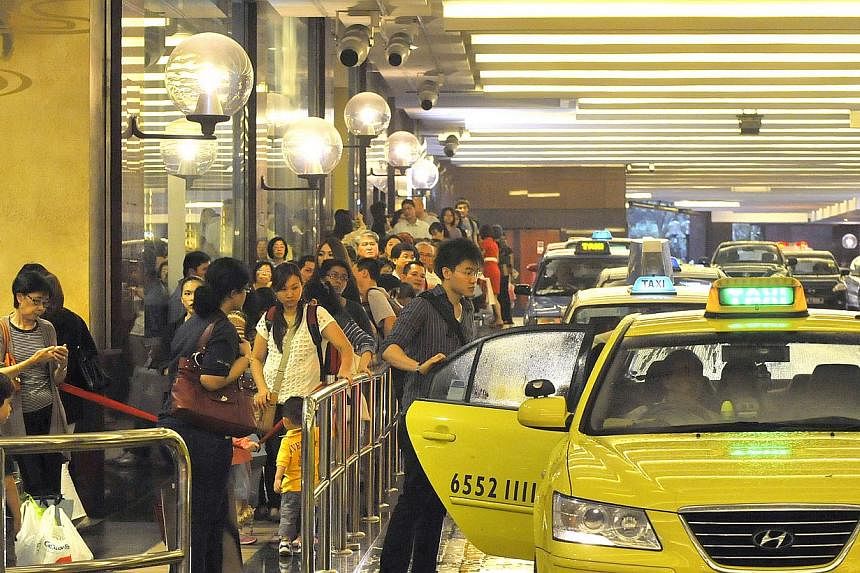Since their introduction last year, taxi availability standards have proven to be effective in increasing the supply of taxis on Singapore's roads.
In 2012, 82 per cent of the total taxi fleet was on the road during peak hours. This rose to 85 per cent last year, and 87 per cent in the first nine months of this year, meaning there are 1,400 more cabs available now during the peak hour grind than there were two years ago.
The average utilisation ratehas also improved - suggesting that the taxis are ferrying customers instead of driving empty. Last year, the rate was 65 per cent, and between January and September this year, it jumped to 68 per cent.
Based on the year's performance up till September, cab companies have generally fared well in having the bulk of their fleets on the road during the 7am-11am and 5pm-11pm peaks. However, many commuters say taxis are still hard to come by during peak hours.
And when it comes to pulling their weight in putting taxis on the road, not every company is equal. Comfort and CityCab were up to par but Premier, SMRT and Trans-Cab fell short on occasion.
The latter three also struggled to keep up with the mileage requirement, which means their drivers are not plying the roads often enough. In fact, they have failed this standard every month this year.
There is much at stake for taxi firms. Not meeting the mark means financial and other penalties.
Prime, the smallest operator with some 900 taxis, has been fined about $140,000, while the other companies have not been hit so far.
But their plight will just get worse next year when the Land Transport Authority (LTA) raises the bar even higher.
On Wednesday, it said that from next year, 85 per cent of a taxi operator's fleet must be on the road during peak hours and clock at least 250km on weekdays, up from 80 per cent now.
But while it has not been shown if the new standards have met peak hour demands, what does seem to be the case is that such stringent requirements can lead to inefficiencies and taxi driver stress.
Cab companies have passed down the availability standards to their hirers - sending out electronic reminders to fulfil the outstanding mileage, or dangling cash incentives and rebates.
Taxi drivers say it makes economic sense to be on the road during peak periods, when they can make 25 per cent more on top of the metered rate.
But they find it a grind to meet the daily mileage requirement. "For one-man operators, it can take about 12 hours to meet 250km," said Mr Lim Chye Lye, 61. As of September, there were about 10,000 hirers without relief drivers. Cabbies say to hit the mileage target, they cruise around empty for hours.
National Taxi Association executive adviser Ang Hin Kee said raising the standards next year will just mean more of the same. He suggests, instead of a blanket increase in supply, to match it better with demand by tapping location-based technologies so cabbies know where people are waiting for taxis.
The LTA maintains that an overall increase is necessary. But with the majority of taxi companies clearly failing to make the mark, and a lack of information on whether passengers are indeed being better served, the efficacy of the framework warrants more study.


